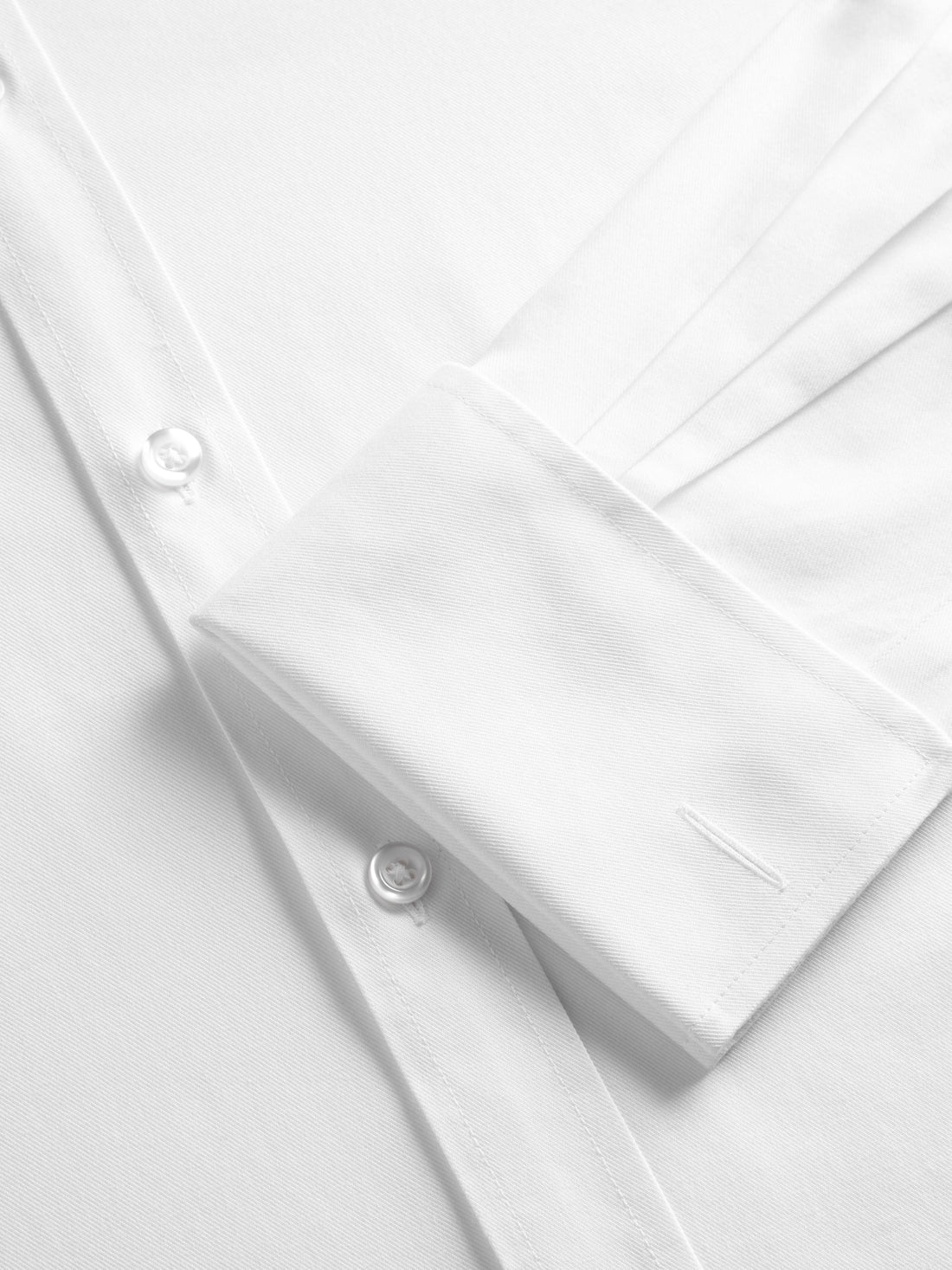
The Shirt Cuff Guide
1. Why Cuffs Matter
Cuffs are more than just closures. They shape how a shirt sits beneath your jacket, how much of your sleeve shows, and, crucially, how formal your outfit feels.
A clean, structured cuff adds polish to even the simplest shirt. Get it right, and you’ll notice how your whole outfit suddenly looks more considered.

2. The Main Types of Shirt Cuffs
Every cuff style has its purpose. Here’s a breakdown of the most common, and most stylish, options.
French Cuff (Double Cuff)
A hallmark of classic formal style.
This cuff folds back twice, creating a clean, structured appearance. It’s the go-to for formal business wear and evening events. French cuffs look particularly sharp under a tailored jacket where a hint of cufflink catches the light.
Best for: Business formal, black tie, or when you want to make a statement.
Pair with: Simple silver or enamel cufflinks for work; jewelled or textured styles for evening.
Read our Black Tie guide to nail Black Tie styling
Button Cuff (Single or Double Button Barrel)
The everyday workhorse. No cufflinks required.
Also known as the barrel cuff, this style fastens with one or two buttons and sits neatly beneath a suit jacket. It’s practical, easy to wear, and perfect for everyday business settings.
Single button: Clean, streamlined, less formal.
Double button: Slightly longer cuff, adds subtle structure and presence.
Best for: Office wear, smart casual, travel.
Pair with: Watches sit well under a button cuff.
Convertible Cuff
The versatile hybrid.
A lesser-known but highly functional design, convertible cuffs fasten with a button but can also accommodate cufflinks when required. Ideal for business travellers or men who like a bit of flexibility in their wardrobe.
Best for: Professionals who move between casual and formal settings.
Pair with: Simple cufflinks for meetings; button-fastened for off-duty.
Rounded or Angled Variations
These refer to the cuff shape rather than fastening type.
-
Rounded cuffs: Softer and slightly more relaxed — often used on smart-casual or semi-formal shirts.
-
Angled cuffs: Sharper, modern, and architectural; they elongate the wrist and pair neatly with slimmer tailoring.
Pro tip: Match your cuff shape to your collar. Rounded cuffs with button-down collars for casual refinement; angled cuffs with cutaway collars for a sharper aesthetic.
Shop Single Cuff Shirts and Double Cuff Shirts

3. When to Wear Each Cuff Style
| Occasion | Recommended Cuff | Notes |
|---|---|---|
| Black Tie / Formal Events | Single or French | Always with cufflinks. Avoid buttons. |
| Business Formal | French or Double Button Barrel | A polished finish without overstatement. |
| Business Casual / Hybrid Work | Single Button Barrel or Convertible | Practical and professional. |
| Smart Casual | Rounded Single Button | Works effortlessly with blazers or knitwear. |
Read more about the differences in occasion: Business Casual vs Business Casual
4. Cufflinks: Small Detail, Big Impact
Cufflinks are jewellery in its most discreet form; a moment of expression that can elevate your entire look.
Workwear Tip: Stick to silver, enamel, or knot designs in navy or black.
Eveningwear Tip: Opt for subtle sparkle, like mother-of-pearl, onyx, or precious metals.
Weekend Tip: Fabric or silk knots add personality without flash.
Remember: cufflinks should complement your watch, belt buckle, or tie bar, not compete with them.
5. How a Cuff Should Fit
A well-fitted cuff sits snugly around the wrist without cutting in, leaving just enough space for a watch if you wear one.
Fit guide:
-
When your arms hang naturally, the cuff should end right at the wrist bone.
-
When wearing a jacket, 1–2cm (about half an inch) of cuff should show beyond the sleeve.
-
Cuffs shouldn’t slide up when you extend your arm.
If you’re between sizes, a good tailor can adjust your sleeve length to ensure the cuff sits perfectly.
Read more about How a Suit Should Fit.
6. Care and Maintenance
Cuffs take the brunt of wear, as they’re the first place dirt, creases, and fraying appear.
-
Unbutton before washing to reduce stress on stitching.
-
Iron cuffs while slightly damp, pressing gently along the edges.
-
Store shirts on hangers, buttoned at the cuff to retain shape.
-
Replace collar and cuff sets (where available) to extend the life of premium shirts.
Learn more about different shirt fabrics.

7. In Closing
The right cuff is a small detail with outsized impact. It’s what separates the merely dressed from the truly well-dressed.
Whether you’re closing a deal, attending a wedding, or stepping into black tie, your cuff tells a story of consideration and craftsmanship.
At TM Lewin, we believe that great style lives in the details — and few details are more telling than the turn of a perfect cuff.
So next time you slip on a shirt, take a second look at your sleeves. Because style, as they say, starts (and ends) at the cuff.
Want to learn more? Read our Ultimate Shirt & Formalwear Guide.